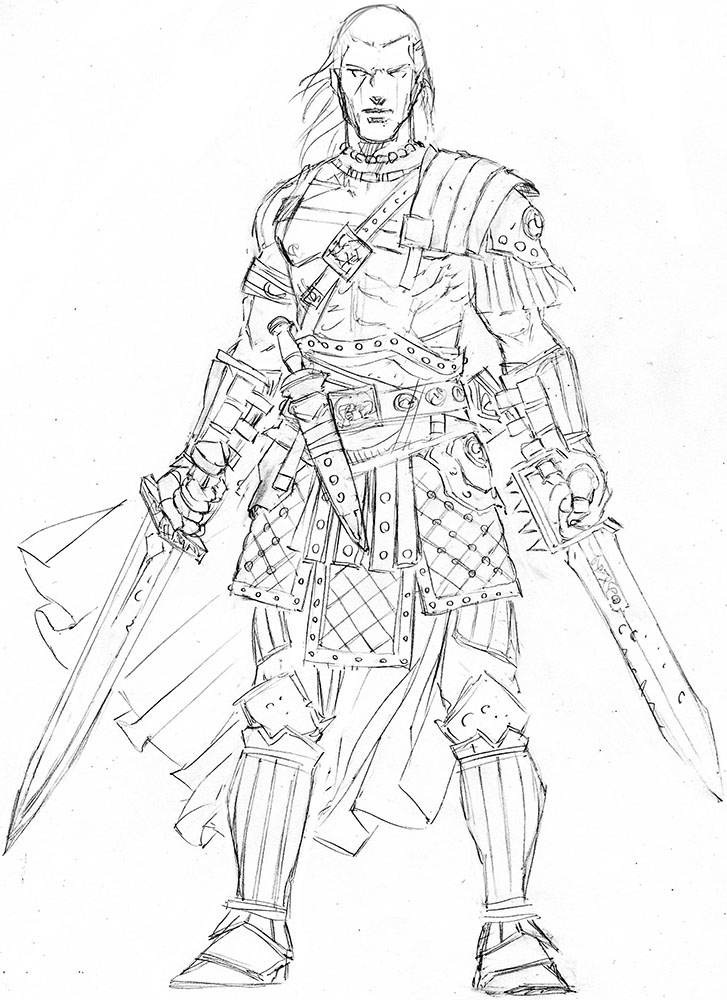 Last Wednesday Paizo released the much anticipated Mythic Adventures playtest. The book is not due out until a Gen Con release in August 2013, but true to Paizo fashion they allow plenty of time for playtesting new rules.
Last Wednesday Paizo released the much anticipated Mythic Adventures playtest. The book is not due out until a Gen Con release in August 2013, but true to Paizo fashion they allow plenty of time for playtesting new rules.
I must preface the comments in this post as being based on a read through of the playtest document and not actual play. My comments are more an overview and overall impression of the new rules and less a dissection of what does and does not work at a finely detailed level. For people seeking to playtest the rules in their game, please read the announcement post and follow the directions there for a proper playtest.
Mythic Adventures will add significant power to your Pathfinder game through the additions of a mythic tier. Many D&D gamers are familiar with epic level rules that kick in beyond typical levels in D&D play. The mythic rules are a little different in that you could start a campaign with mythic powered at level 1 or your could apply them partially through a campaign or you could even apply them temporarily during your campaign.
I readily admit I have rarely had any interest in epic level play. I typically feel a D&D or Pathfinder character starts to become a little too superhero-ish in the mid-teens levels of play. It is fun for awhile, but mainly as a pinnacle of a character’s adventuring career. Playing extended campaigns at “epic” levels is not an area I have historically had a lot of interest in.
This is one of things about the Mythic Adventures rules that is really unique. They offer a way to apply these power boosts right at level 1. No need to play through 20 levels of play and then become “epic” or “mythic”. No need to build pre-gens at levels 20+ just to start there with “epic” or “mythic” level characters. I think the way Paizo has figured out a way to layer these mythic rules into play is quite significant.
I also like that for people like me, that don’t necessarily want to play a whole campaign at “mythic” levels can craft ways to add these rules in on a temporary basis. There are some examples of this in the playtest. A perfect way for players or GMs like me to make use of these rules without committing to an entire campaign at “mythic” levels.
Another tool for the GM is the option of only applying mythic rules to particularly noteworthy opponents or creatures. They could be applied to a human adversary or even an animal-like adversary if the GM saw fit.
There are a multitude of ways to use the mythic adventure rules in your game even if you do not want to commit to an entire campaign at that power level. Very flexible, much more flexible than I thought the rules would be.
The playtest is freely downloadable from Paizo for those that wish to see the details of the rules. So I am only going to hit some of the highlights without going into significant detail.
The mythic rules use ten tiers to scale the power level of the mythic character upwards. These tiers do not necessarily correlate to character (i.e. you could have a 10th level fighter that is only at the 2nd level mythic tier). Tiers are gained by lesser and greater trials.
Each mythic tier grants base mythic powers that are independent of the mythic path you choose. Base powers include things that make you more difficult to kill, flaws, mythic power itself, initiative bonuses, and more as you advance.
There are six main mythic paths a character can choose to apply to their character. Each is geared towards a specific genre of class. The mythic path is what more specializes your mythic power to your class abilities. The paths can include access to mythic flavored spells, feats, and such. Paths also include mythic abilities a player can choose as they advance tiers.
The playtest document also includes many examples of lesser trials mythic characters can choose from to gauge their advancement. The GM is welcome to create their own as well.
Tips on running a mythic game gets a chapter in the playtest document. These tips help show how versatile the system is. From running a game where only creatures can be mythic to temporary use of the rules to running a whole campaign with mythic characters and creatures.
Some example mythic magic items and monsters also get a couple of chapters in the playtest. Mythic magic items and monsters open up whole new realms of play to design in and craft clever challenges for your players.
The playtest document wraps up with a short adventure allowing a GM to tryout the playtest rules with their group. It also is another example of the flexibility of the rules for those GMs that only want to dabble in the mythic realms of power instead of running entire mythic campaigns.
The playtest document weighs in at 52 pages. The layout is excellent, even Paizo’s playtest documents ooze quality. There is some artwork peppered about in the document in the form of sketch art.
When I first heard about Mythic Adventures I was a little skeptical. But after reading through the playtest document I certainly admire the framework. It appears to be extremely flexible for GMs and players and has made itself readily usable by new campaigns and old campaigns already well under way. I am anxious to see how it evolves over time. It looks quite promising even at this early point in the playtest process.
